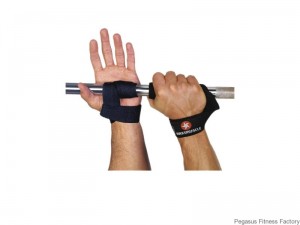
Question: What about elbow pain. I don’t get shoulder pain when doing pull ups, just elbow pain.
Answer: I experienced a lot of elbow pain when I was first doing a lot of pull ups. I learned that rather than coming to a full hang position, with fully extended arms, it’s best to have a slight bend at the elbow. This helps to maintain the integrity of the joint. You can check out what my friend, Rick Kaslej has to say here:
Here are some posts that will help you with elbow pain:
http://challengeworkouts.com/elbow-pain-and-what-to-do-about-it
http://challengeworkouts.com/elbow-pain
http://challengeworkouts.com/are-your-elbows-and-forearms-forcing-you-to-change-your-challenge-workout
http://challengeworkouts.com/save-your-elbows
******************************************************************************************
Question: I want to start by saying that I love the pull up program. I am near the end of the first part of the program (Getting Your First Pull Up) and I am still a ways off from getting my first one. Should I repeat the first part of the program until I can do one or move onto the next part? Thanks so much in advance and for helping me (and other women) strengthen our upper bodies!! Elizabeth
Answer: I’m thrilled that you love the program. It’s a challenge for women to get their first pull up. Once you get your first, more come more easily so stick with it! My suggestion is to go onto the push up program if you purchased it (if you didn’t you can grab it here: http://challengeworkouts.com/pushup-challenge ). This will continue to help develop your upper body strength. If you don’t have the push up program, try the body weight pull up program and then go back to level one of the pull up program. There’s not much hope of doing a more advanced program if you’re not comfortable with the first. I want you to be able to do one to five pull ups before moving to program two. All the best and stayed tuned for more tips. Let me know how I can help you.
******************************************************************************************
Question: I get pain when I do pec dec flies, why? What can I do other than avoid this movement? Darren
Answer: Take a look at THIS POST to find out what my pal, Rick Kaselj has to say about this. He’s got an easy solution for you.
*******************************************************************************************
Question: I just started your pull up program. I have NEVER had any upper body strength, but my goal this, my 50th year, is to be able to do a pull up. My problem is the hanging (which is about all I can do now) really hurts my hands. My ring fingers seem a little inflamed too. Is there something that I can do that will build up my hand strength, or will they eventually “get over it”? I have worked my way up to a 15 sec hang (full body weight) and could go longer if it weren’t for the hands. Thanks for your help! I really enjoy the Friday Q and A blogs! Stacey
Answer: Stacy, your grip strength appears to be the weak link with your training. You can try working with workout straps when doing your pull ups. It will help you even when doing the hanging position. You’ll be able to hang on a little longer to help develop the upper body strength needed to eventually do a pull up. The inflammation of the fingers is a bit worrisome, I’d definitely get that looked into by a medical professional. I’d continue to do a few sets of hanging without your straps to help with grip strength, but you’ll never develop the necessary strength to do a pull up if you can’t hold on.

******************************************************************************************
Question: Question on Ricks video about the vertical hang from here. When doing the hang, are we keeping the shoulder blades pulled down and locked or are we “unlocking” them and really just hanging by our ligaments?
Answer: This is right from Rick: You are hanging there like you are a monkey hanging from a tree of a kid hanging on the monkey bars.
******************************************************************************************
Question: I need to work on my rotator cuff, what’s a good stretch?
Answer: I went to the shoulder expert, Rick Kaslej again. Here’s what he has to say:




